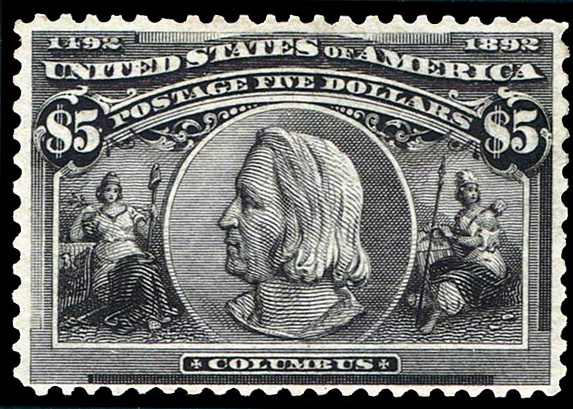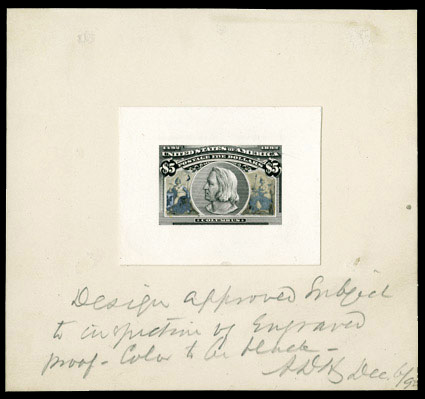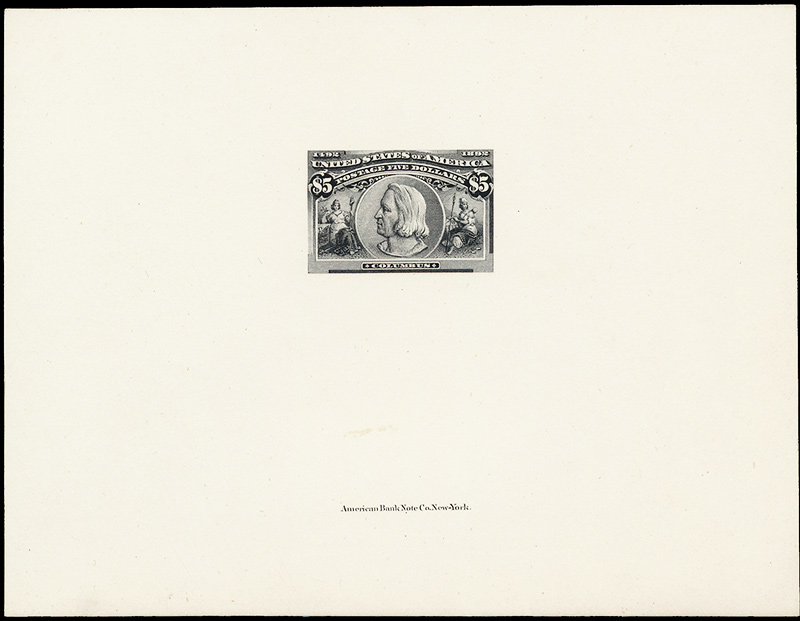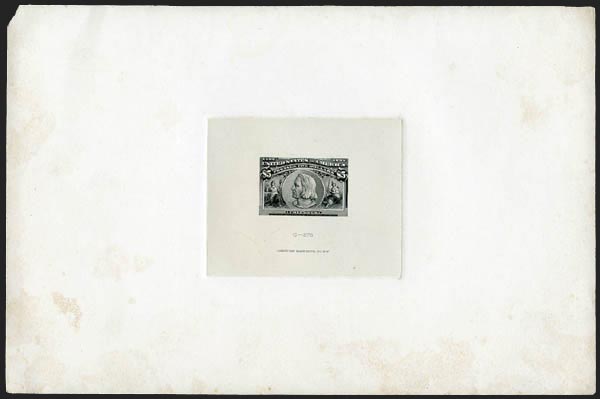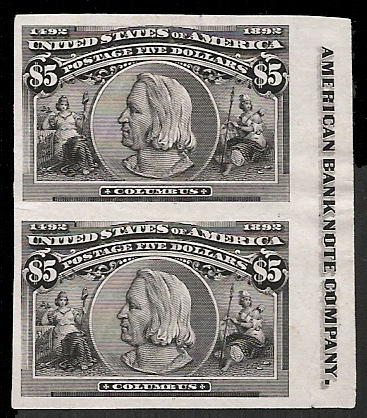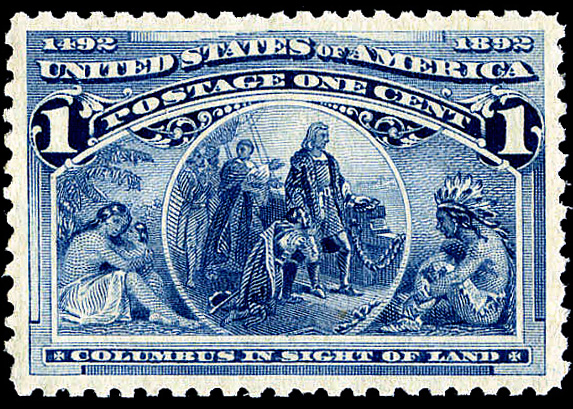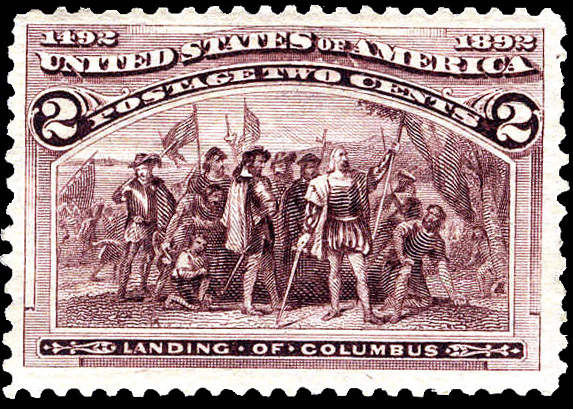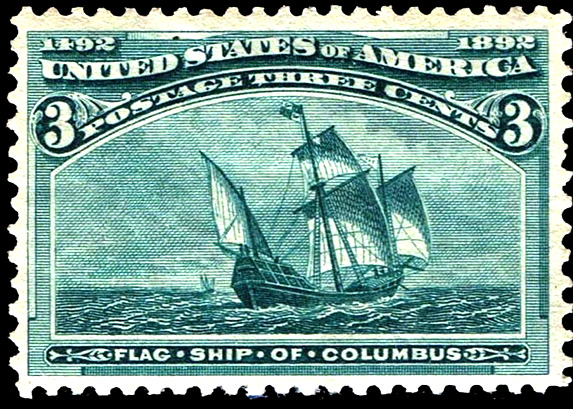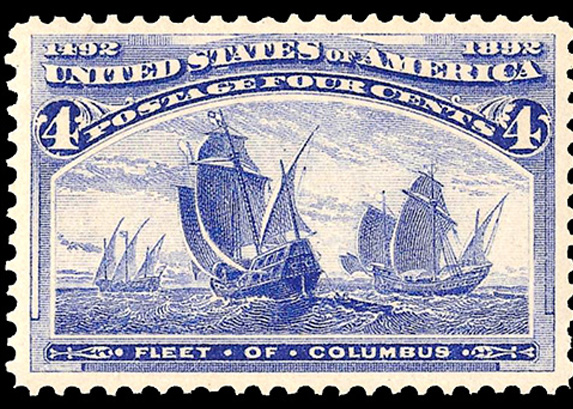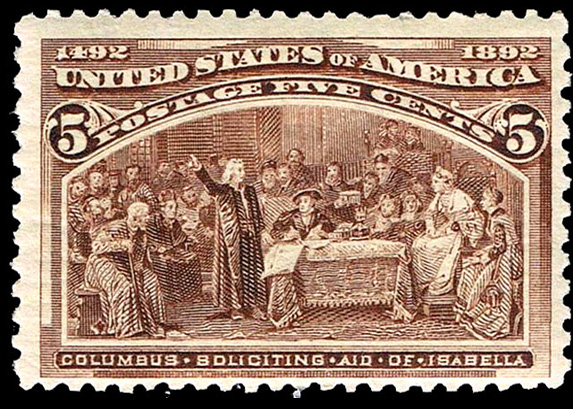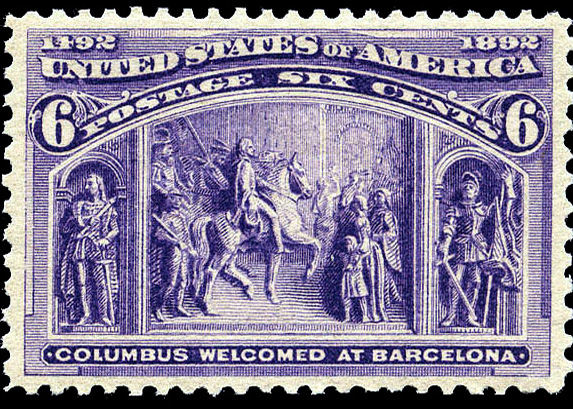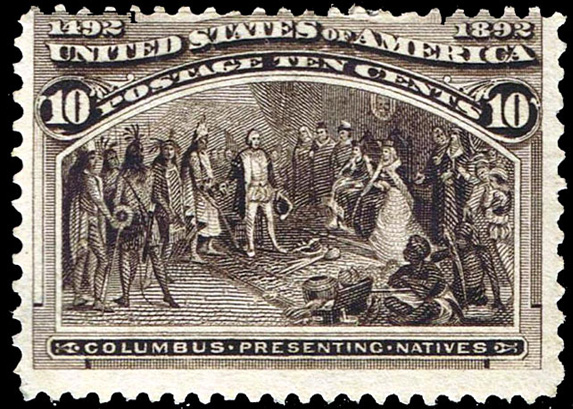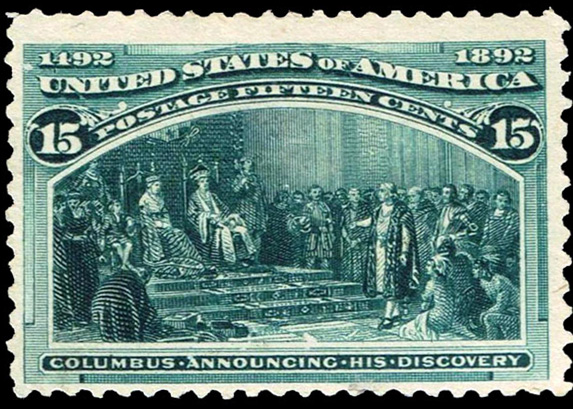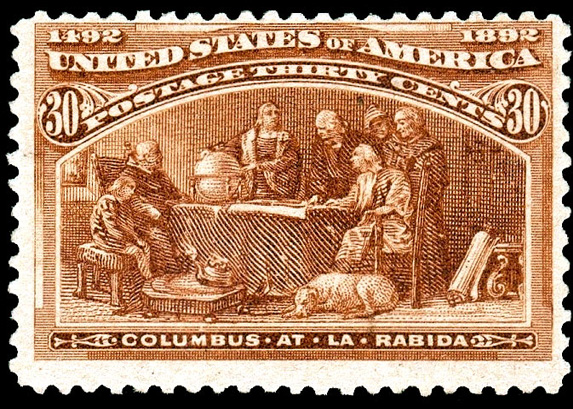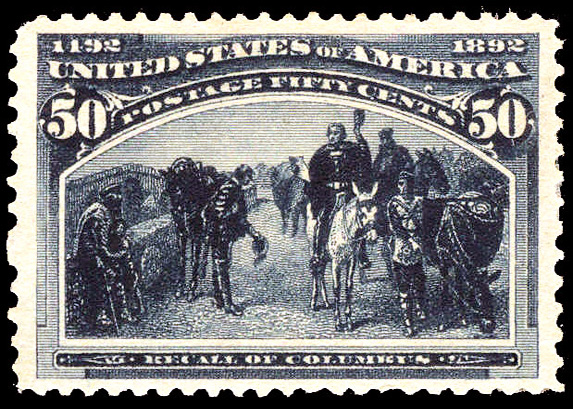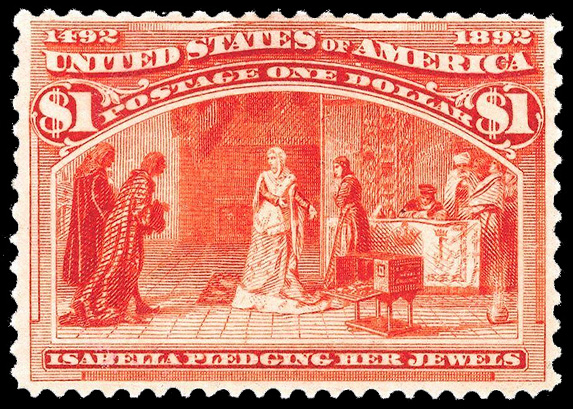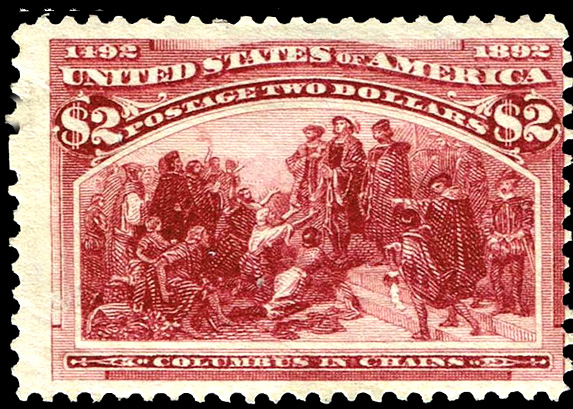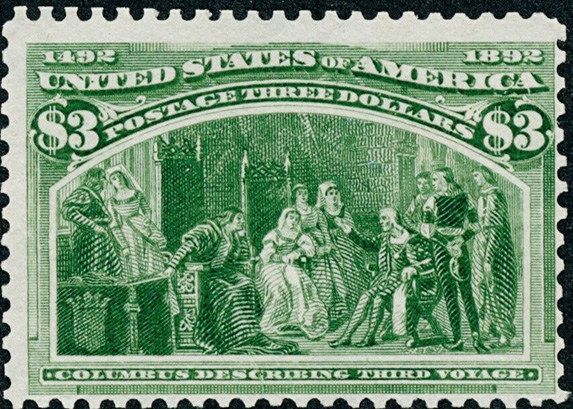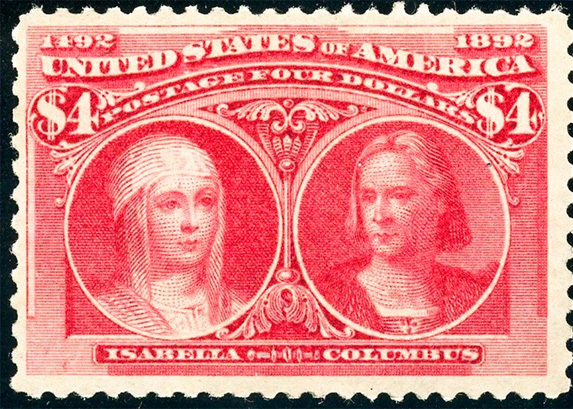Basic Info
$5
Black or grayish black
Subject: Columbus
Number issued: 27,350 (of which 21,844 were sold)
Perforations: 12
Watermark: Unwatermarked
Scott #: 245
Issued: January 1st, 1893
Value
Used
$400 - $475
No postmark with gum (MH)
$750 - $1,300
Full perfect gum, no postmark
no trace of stamp hinge mark (MNH)
$2,000 - $2,500
Earliest date of use
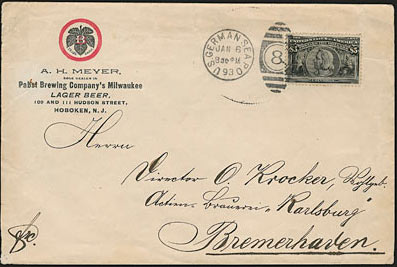
Earliest date of use January 6th, 1893
Exposition cancels
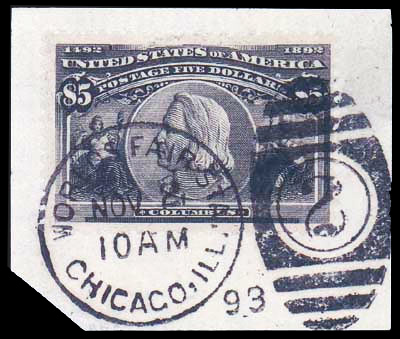
The only known example of the $5 Columbian with the Worlds Fair Exposition postmark
Counterfeits
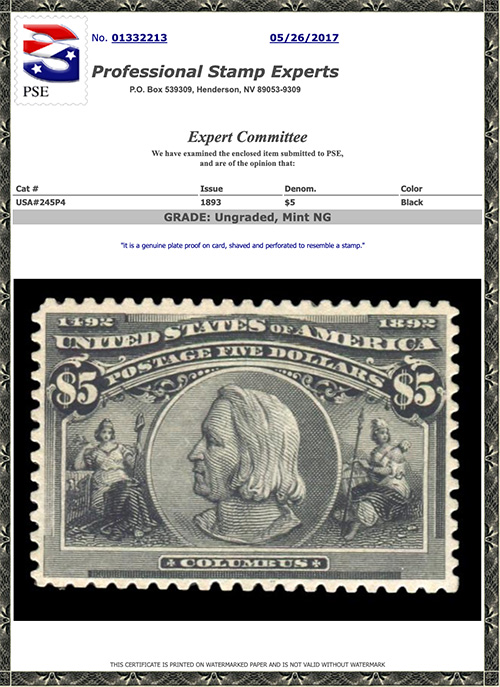
An example of a proof on card which has been thinned to resemble the thickness of stamp paper. The proof was then perforated to give the impression that it was a #245
Inspiration for the Design
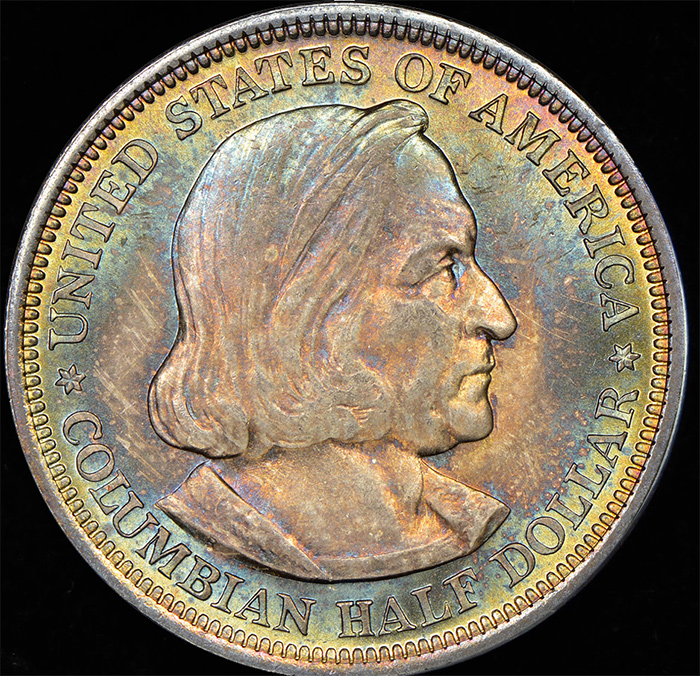
The source for the design was the 1892-1893 Columbian Exposition Half Dollar designed by Olin L. Warner who based his design on a medal that had been struck in Madrid.
$143.22 !!
The value of $5 in 1893 is $143.22 today. Can you imagine going to the post office and buying a $143 stamp!
At the time, there was no $5 postal rate and as such the stamp was pointless. It was commonly believed that the stamp was issued for collectors to acquire.This resulted in a huge hue and cry from the stamp collectors, most of whom could not afford the princely sum of $5 to buy this stamp, and thought that the post office was trying to wring money from them. Your collector would have to shell out $17.69 to purchase the whole series, equivalent to $506.71 today. This protest became even louder when the USPS did the same thing with the Trans-Mississippi series and issued a $2 value.
In the end the stamp sold very well and the price tripled very quickly based on speculation. As in all speculation, what comes up comes down and by 1895 they were being dumped, even at prices below face. One side effect of this dumping is that it depressed the demand for the $5 bureau issued this year, making this stamp far more scarce than the $5 Columbian.
Plate #'s

#245 was issued with the following plate #
DD 108
Essay's and Proofs
The story behind the Columbian Issue

An American Bank Note Company set of proofs mounted on card and signed by the engravers
On the occasion of the 400th anniversary of the Landing of Columbus the largest Exposition ever held on US soil was held in Chicago. The Post Office was determined not to miss out on this and proposed a series of stamps to commemorate the event. The purpose behind this was three fold
1) To encourage the purchase of stamps by the public
2) To stimulate the hobby of stamp collecting
3) To make a tidy profit
It was estimated that 3 Billion stamps would be sold and between September and the end of December 1892 work progressed on their production.
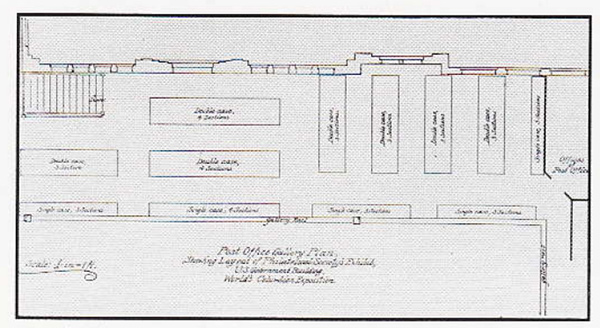
The Post Office's plan of their exhibition space at the Chicago Exposition
At the Exposition the Post Office was in the US Government Building and had been given a vast amount of display space. The display cases showcased stamps from the very earliest days of stamps to 1892 both in the US and around the world. Postal cards were sold in every building and of course one could purchase the new Columbian series stamps.
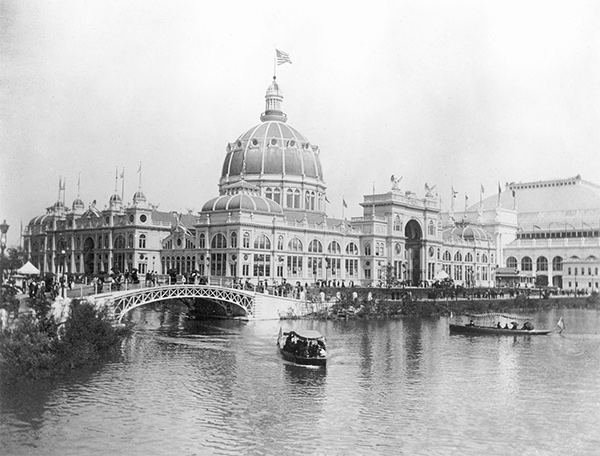
The US Government building at the World's Columbian Exposition
The Post Office Dept. informed all post offices that they would not be able to order the new series on an 'as needed' basis as was the normal procedure. Instead they would be sent an amount the powers to be deemed sufficient. Plus the department would not accept any returns and they would not be issued any other stamps until they had run out the new series. This caused much complaining by the post office owners, complaints were coming in that these stamps were too big, being twice the size of current issue (this was done to accommodate the expansive designs).
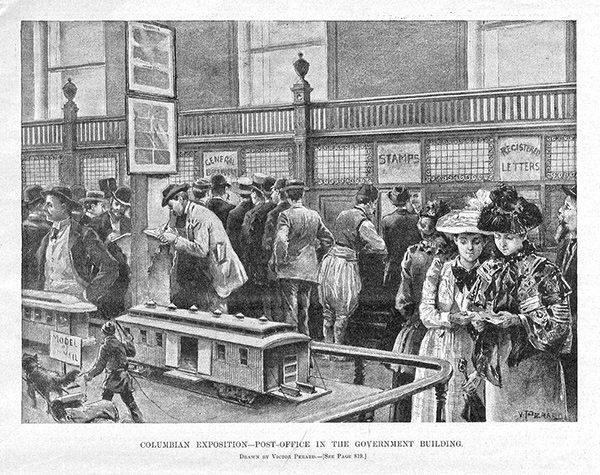
The Post Office display space at the World's Fair
The post offices need not have worried. The stamps proved to be immensely popular. So much so that Post Offices refused to sell the higher values for fear of running out. The price of these skyrocketed as a result. Companies instructed their offices to use the higher values on internal parcels so they could benefit from their sale when delivered to their branch offices. US travellers in Europe were accosted for them, they were even traded on bourses.
And then like all bubbles, it collapsed. Before you knew it the $5 stamps were being sold at a steep discount. Being totally useless for letters, and with a world glut the price dropped like a stone, at one point stamp dealers would only offer 30% of the face value for them.
